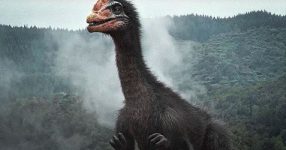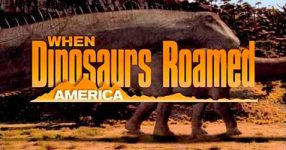This extraordinary documentary, “300 Million Years: The Big Crash”, takes viewers on a captivating journey across the vast expanse of Europe, exploring its rich geological and biological history spanning an impressive 300 million years. Narrated by a compelling voice, the film seamlessly blends science and storytelling to unveil the hidden treasures of the continent. From the remnants of ancient oceans to the emergence of tropical rainforests, the documentary promises to be a visual and educational feast.
The journey begins with the discovery of evidence from prehistoric times in Germany, where strange creatures once roamed. The narrative introduces us to the Plateosaurus, a featherweight herbivore that marked the onset of the Age of Dinosaurs. As the story unfolds, the documentary takes a giant step back to the young Earth, still a glowing ball of fire, eventually cooling down to give rise to the primeval precursor of Europe. The Carbon or Coal Age is revealed, showcasing a world with strange atmospheres, giant centipedes, and primitive landscapes.
The Evolution of Life in Europe
As the documentary delves deeper into history, it paints a vivid picture of ancient tropical forests and the emergence of life on land. From amphibians with legs and lungs to the first animals taking flight, the narrative captures the evolution of Europe’s diverse ecosystems. The collision of vast landmasses forms mountain ranges, shaping the continent’s geological identity.
The story unfolds over 150 million years, depicting the grinding down of mountain ranges, the formation of dusty valleys, and the appearance of life in unexpected forms. From mudskippers adapting to desert climates to giant dragonflies patrolling the skies, Europe becomes a stage for the relentless dance of evolution. The documentary highlights the ever-changing landscapes, from forests and swamplands to the diversity of life in the Mediterranean pine forests, beech-covered regions, and the taiga in the north.
Witnessing the Continents in Motion
As Europe takes its journey northwards from the equator, the documentary explores the impact of geological events on the continent. The collision of continents gives rise to the Alpine mountain range, shaping the landscape we see today. The narrative skillfully weaves through the challenges faced by various species, such as marmots adapted to the Alpine climate and the evolution of flowering plants and insects.
The film doesn’t shy away from addressing the dramatic moments in Europe’s history, including the collision that led to the end of the Age of Dinosaurs. The Messel Pit, now a UNESCO World Heritage Site, serves as a unique window into prehistoric Europe, revealing the oldest extant hand of a primate and a fossil record that tells tales of life and death.
From Neanderthals to Modern Civilization
The documentary takes a fascinating turn as it explores the presence of Neanderthals in Europe. It paints a vivid picture of their lives, survival in changing climates, and encounters with other formidable creatures. The narrative seamlessly transitions to the rise of modern civilization, from the Roman conquest and road networks to the complex relationship between nobility and nature.
The film provides insight into the evolution of landscapes, the shaping of European forests, and the intricate balance between humans and the environment. From the Romans’ measurement techniques to the development of sandstone mining along the Elbe, the documentary showcases the profound impact of human activities on Europe’s terrain.
A Glimpse into Europe’s Future
The documentary concludes with a contemplation on the future of Europe. As it reflects on the geological destiny of the continent, the film leaves viewers with a profound sense of wonder and curiosity. The narration foresees a Europe that will continue to transform, shaped by geological forces beyond human comprehension.
In the end, “300 Million Years: The Big Crash” stands as an exceptional piece of visual storytelling, blending scientific knowledge with captivating narratives to unveil the untold stories of a continent that has witnessed the ebb and flow of life over millions of years.












